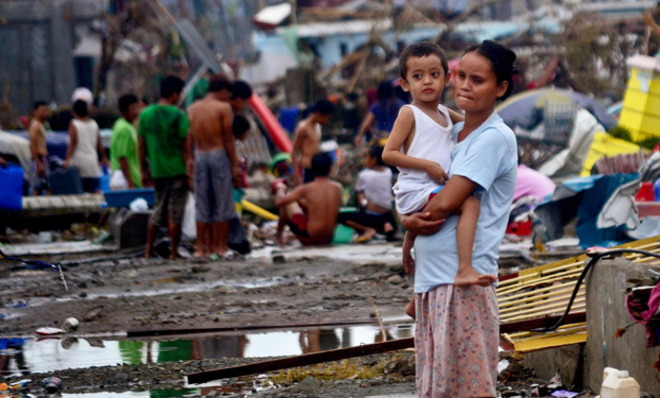Can the Philippines' growing economy weather Super Typhoon Haiyan?
Prior to the storm, the archipelago nation had been on a roll

Five days after Super Typhoon Haiyan made landfall in the Philippines, analysts have started assessing the economic impact of the storm, which ravaged crops, homes, and businesses in many areas across the archipelago nation.
Haiyan hit at a time of growth for the Philippines. Under President Benigno Aquino III, the country's economy has picked up the pace in recent years, emerging as Southeast Asia's "rising economic star," according to Reuters' Erik De Castro. Motored by diverse industries — including outsourcing centers, electronics factories, and agriculture — growth has topped seven percent for the past four quarters, the fastest pace in the region except for China.
There's no question that Haiyan will slow some of that growth. Losses are expected to reach between $12 billion to $15 billion, about five percent of the country's economic output, says Bloomberg's Noah Buhayar. Though Hurricane Sandy, by comparison, racked up around $50 billion in economic damage, the relative size of the two countries means the cost of Haiyan will be "several times worse for the Philippines economy," says Buhayar, amounting to nothing less than a catastrophe.
The Week
Escape your echo chamber. Get the facts behind the news, plus analysis from multiple perspectives.

Sign up for The Week's Free Newsletters
From our morning news briefing to a weekly Good News Newsletter, get the best of The Week delivered directly to your inbox.
From our morning news briefing to a weekly Good News Newsletter, get the best of The Week delivered directly to your inbox.
Filipinos, who despite recent gains make relatively low wages, will face multiple economic challenges. Only an estimated 10 to 15 percent of the total losses in the Philippines are insured — compared to about 50 percent in Sandy. In addition, the storm squarely struck two important economic regions: The agricultural province of Leyte, and Cebu province, home to thriving outsourcing operations.
"Farm output in the affected region, where the biggest crops are sugar cane and rice, is likely to have been devastated, which, combined with supply disruptions caused by damaged infrastructure, is likely to push up food prices and stroke inflation," says De Castro. Finance Secretary Cesar Purisima estimated that could shave about one percentage point off the country's GDP in 2014.
Though the economic damage will be far-reaching, some analysts are saying it could have been worse. The capital of Manila, home to strong outsourcing operations and manufacturing centers, is responsible for about one-third of the country's economic output, but emerged relatively unscathed from the storm.
The country also has a modest national debt, and an investment-grade bond rating, both of which will be assets as the government sets out financing reconstruction.
A free daily email with the biggest news stories of the day – and the best features from TheWeek.com
Another factor to spark optimism: "Many Filipinos have relatives abroad who send money back home," says USA Today. "About 10 percent of the economy comes from so-called 'remittances,' the World Bank estimates, letting the country run a trade surplus." Analysts expect these remittances to rise in the coming months.
All of this may be enough to keep the nation on the growth track. As an economist at Nomura pointed out, "In terms of the typhoon's impact of the overall economic outlook, as tragic as the event is, we think it does not change the fundamentally strong macro picture that is making the country a regional stand-out."
Finally, it remains to be seen whether the rebuilding process will help boost the economy. Buhayar explains:
Economies can often get a lift after disasters. Following Sandy, contractors hired workers to meet demand. Individuals, businesses, and governments also spent to help rebuild and fortify buildings and infrastructure.
That may be muted in the Philippines because there’s less insurance to spur activity, said Robert Muir-Wood, chief research officer for catastrophe modeler Risk Management Solutions Inc. [Bloomberg]
Carmel Lobello is the business editor at TheWeek.com. Previously, she was an editor at DeathandTaxesMag.com.
-
 A luxury walking tour in Western Australia
A luxury walking tour in Western AustraliaThe Week Recommends Walk through an ‘ancient forest’ and listen to the ‘gentle hushing’ of the upper canopy
-
 What Nick Fuentes and the Groypers want
What Nick Fuentes and the Groypers wantThe Explainer White supremacism has a new face in the US: a clean-cut 27-year-old with a vast social media following
-
 5 highly amusing cartoons about rising health insurance premiums
5 highly amusing cartoons about rising health insurance premiumsCartoon Artists take on the ACA, Christmas road hazards, and more